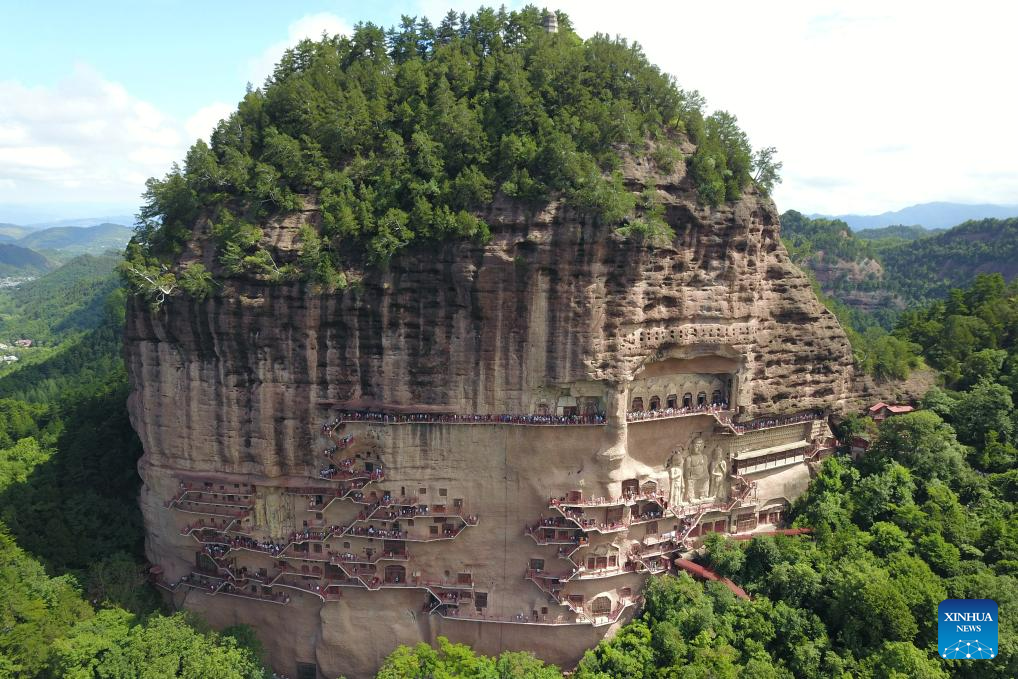Monitoring system to protect Gansu's famed grottoes


Chinese earthquake scientists have established the country's largest seismic monitoring network for grottoes at the Maijishan Grottoes in the northwestern province of Gansu, providing early warning protection for one of China's four major cave complexes.
Located in Tianshui, Gansu province, the Maijishan Grottoes are a 1,600-year-old UNESCO World Heritage Site that has historically been damaged by earthquakes. The haystack-shaped cliff structure of the grottoes is both an artistic marvel and a seismic vulnerability.
The monitoring network was completed in early May and can transmit data in real time for display through 3D modeling. This offers scientific support for developing precise seismic protection plans, according to the Gansu Earthquake Administration.
The Maijishan Grottoes feature 221 caves suspended on a cliff face, connected by a 1.5-kilometer-long aerial walkway. The highest section of the walkway is more than 70 meters above ground.
"We have formed a comprehensive monitoring network by relying on over 200 existing seismic monitoring stations within a 100-kilometer radius of the Maijishan Grottoes and six strong-motion monitoring stations set up on the cliff," said Zhou Weidong, a senior engineer at the administration's information center. Zhou said the network offers timely and effective earthquake early warnings for the grottoes and the surrounding area.
"The dense monitoring network allows for real-time monitoring of earthquakes and other vibrations around the grottoes," he said.
"Most importantly, the stations set up directly at the grottoes provide foundational data for their protection and future reinforcement."
In addition to the newly established monitoring system, the administration also uses a specialized instrument known as a nodal seismometer for daily monitoring.
The device detects vibrations in the walkways and the mountain itself. By analyzing the data, scientists can determine the vibration characteristics of different parts of the site.
Using damage identification technology, scientists can locate damage on the walkways with millimeter-level precision, offering technical guidance for restoration work, the administration said.
Lu Yuxia, an associate researcher at the administration, said that many of the grottoes' auxiliary walkway platforms are structural weak points.
"These structures are actually weak links in terms of seismic resistance, and their damage is generally not easily detected," Lu said.
"Mobile monitoring can help identify these hidden vulnerabilities."
The Maijishan Grottoes were inscribed on the World Heritage List in 2014. Located in a high seismic intensity zone, they have suffered localized damage from earthquakes throughout history.
- Monitoring system to protect Gansu's famed grottoes
- Ex-political adviser gets suspended death penalty
- Pandas return to Sichuan after their 11-year stint in Malaysia
- Police investigating a cyberattack on a tech company
- Rainfall in Guangdong triggers emergency measures
- Experts call for more tech use in dam construction





































